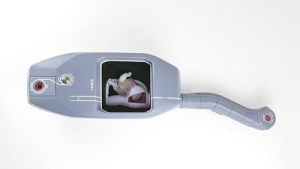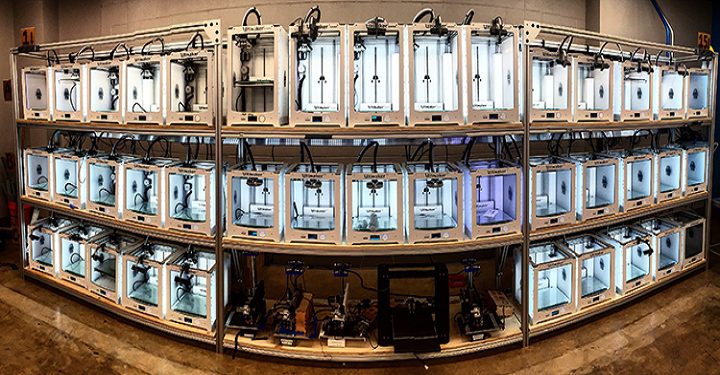We’ve got a shorter edition of 3D Printing News Briefs for you today. Siemens Corporate Technology is working on process simulation for additive manufacturing. BIOMODEX is launching a realistic, 3D printed new training product, and an orthopedic surgeon is using 3D printing to repair bone fractures. Finally, several companies are collaborating and using metal 3D printing to make a customized component for the upcoming Ironman race.
Siemens Working on 3D Printing Process Simulation
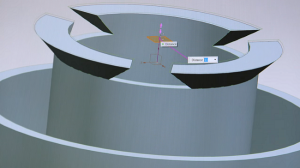 Often in metal 3D printing, all kinds of defects can occur, such as distortion and local overheating. Getting the 3D print right the first time around is the goal that experts of Siemens Corporate Technology are working to achieve. Process simulation for additive manufacturing is a pretty important step on the way to industrializing the technology, as getting complex geometries correct at the beginning of the process could save time and money down the line.
Often in metal 3D printing, all kinds of defects can occur, such as distortion and local overheating. Getting the 3D print right the first time around is the goal that experts of Siemens Corporate Technology are working to achieve. Process simulation for additive manufacturing is a pretty important step on the way to industrializing the technology, as getting complex geometries correct at the beginning of the process could save time and money down the line.
“Our vision is to develop this additive manufacturing process in such a way that we can actually print a model created in the CAD system, getting it right the first time and printing it perfectly,” said Ursus Kruger of Siemens Corporate Technology in Berlin. “We call this the first-time-right principle, which we want to achieve here.”
Learn more about Siemens’ work in the video below:
BIOMODEX Launching New 3D Printed Training Product
With the launch of its new training product, medical technology startup BIOMODEX is officially entering the interventional cardiology space. Its new Left Atrial Appendage Closure Solution (LAACS) lets physicians work on their skills using a super realistic, 3D printed multi-material heart. The startup’s patented INVIVOTECH technology makes it possible to create 3D printed organs based on a patient’s medical imaging, like CT scans. It’s also possible to reproduce an organ’s surrounding tissue and biomechanics as well.
“Our mission is to provide as realistic an experience as possible for physician training,” said Carolyn DeVasto, the Vice President of Global Commercialization at BIOMODEX. “Our advancements in patient specific 3D printing using INVIVOTECH and ECHOTECH allow physicians to train in a clinical setting using the same techniques they use in an actual procedure. Ultimately, we want to provide the physicians an opportunity to test drive any procedure on our solution to improve safety and clinical outcomes.”
BIOMODEX’s patented ECHOTECH also allows physicians to observe the 3D printed heart using fluoroscopy, or any TEE ultrasound system. This means that they will be training with the same techniques they’ll be using in real life procedures, which is invaluable in the operating room.
Repairing Fractures with 3D Printing
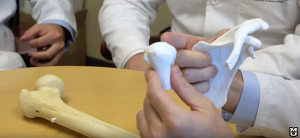 Nathan Skelley, MD, an orthopaedic surgeon and sports medicine specialist at the Missouri Orthopaedic Institute, is working on a research project about a specific issue related to trauma orthopaedics – reducing and fixing bone fractures.
Nathan Skelley, MD, an orthopaedic surgeon and sports medicine specialist at the Missouri Orthopaedic Institute, is working on a research project about a specific issue related to trauma orthopaedics – reducing and fixing bone fractures.
“In the United States, we’re very fortunate that I have an almost endless supply of plates and screws,” Dr. Skelley said. “I’ve never been in a situation in the OR where I don’t have another screw or I don’t have another plate to fix one of these fractures. But in the developing world or in rural environments, those resources are not always the case.”
Dr. Skelley and his team are testing if they can easily replicate the plates, screws, and tools they use so often in these types of common trauma and sports procedures with 3D printing, so physicians in areas not quite as developed as the US can perform necessary orthopaedic surgery. You can learn more about his work in the video below:
Metal 3D Printing for Ironman World Championship
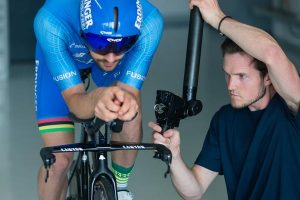 Next week, the Ironman World Championship, a yearly culmination of several Ironman triathlon qualification races held around the world, begins in Hawaii. For this particular race, Canyon, Swiss Side, and Sauber Engineering are working together on Project 101 for Patrick Lange, last year’s Ironman World Champion. The goal is to make the Lange, the fastest Ironman, even faster, by using metal 3D printing to fabricate a customized aero cockpit that fits Lange’s arm shape and position perfectly. CFD (Computational Fluid Dynamics) simulations were used to confirm that his tri-bar extensions were producing a decent amount of drag, so the project partners worked out a design to integrate them into Lange’s arms.
Next week, the Ironman World Championship, a yearly culmination of several Ironman triathlon qualification races held around the world, begins in Hawaii. For this particular race, Canyon, Swiss Side, and Sauber Engineering are working together on Project 101 for Patrick Lange, last year’s Ironman World Champion. The goal is to make the Lange, the fastest Ironman, even faster, by using metal 3D printing to fabricate a customized aero cockpit that fits Lange’s arm shape and position perfectly. CFD (Computational Fluid Dynamics) simulations were used to confirm that his tri-bar extensions were producing a decent amount of drag, so the project partners worked out a design to integrate them into Lange’s arms.
Swiss Side 3D printed the first concept and tested it back in May, and Lange’s arms were scanned at Sauber to ensure the perfect fit. Canyon and Swiss Side designed and optimized the aerodynamics for the new aero cockpit, and using FEM (Finite Element Method) structural analysis, the parts were optimized for weight and stiffness. The most recent iteration was 3D printed in plastic and tested in another wind tunnel session so Lange could approve its performance. Then, Sauber used titanium to 3D print the final parts; aluminum was used to create ultra-light shells for the elbow pads.
“While working on Project 101, we did something that has never been done before in triathlon,” Lange said. “I am very proud to be part of this project. We tested my new aero cockpit in the wind tunnel and the results confirmed a significance performance improvement. This will have a direct impact on my bike-splits in Kona. I can’t wait to show the world my new aero cockpit and deliver a strong performance on October 13th at the big race in Kona, Hawaii.”
What do you think? Discuss these stories and other 3D printing topics at 3DPrintBoard.com or share your thoughts in the Facebook comments below.

